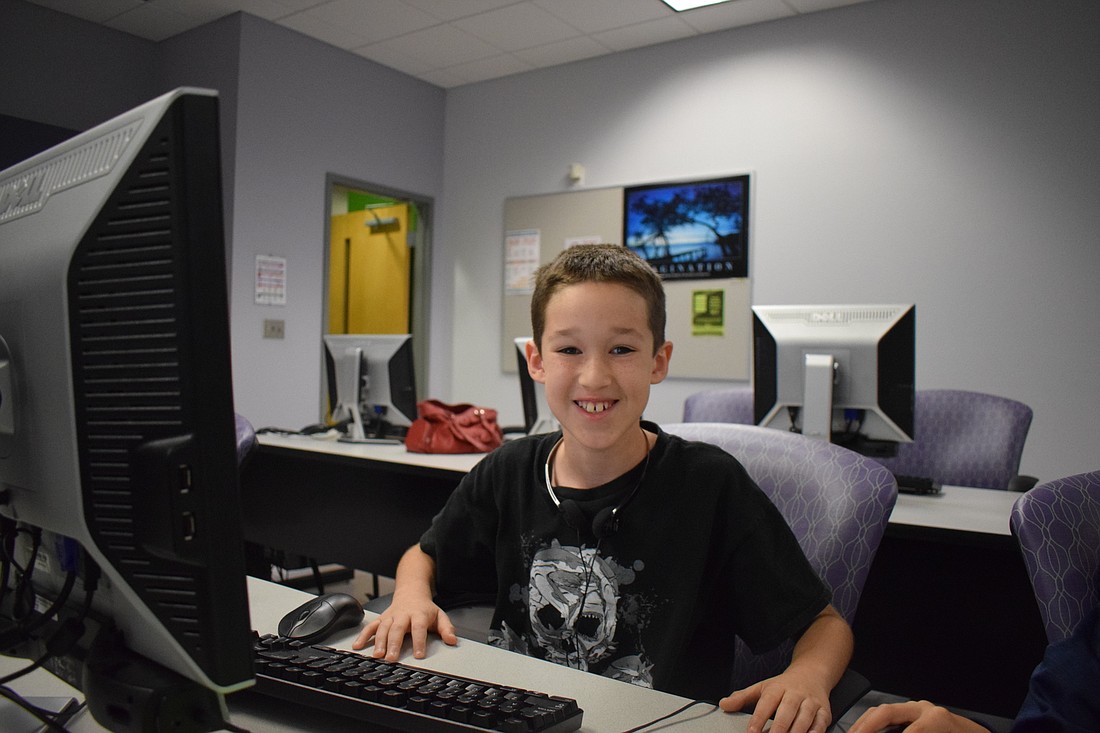- May 15, 2025
-
-
Loading

Loading

Aiden Torres dreams of curing brain cancer.
The fourth-grader at Robert E. Willis Elementary is quite a ways from such a goal, but perhaps the spring break coding camp March 25-29 at the State College of Florida’s Lakewood Ranch campus whet his appetite to someday become a neural engineer.
Like Torres, many of the first-through-fourth-grade kids attending the camp have dreams of changing the world.
They were all learning how to code —or how to tell computer programs what to do.
While many of the students have huge goals, some just wanted to learn to code because it makes them laugh.
Willis Elementary first-grader Katherine Bonilla, who said she might one day want to be a doctor or an astronaut visiting another galaxy, said her favorite part of the class is listening to the funny sounds available on the program the students use — Scratch.
On March 27, Bonilla was trying to use code on her computer to produce cat sounds on an animated program.
“We want it to have the meow sound and the meow bubble,” said instructor Michelle Roberts, who was trying to get her students to have an orange cartoon cat in the program make a noise and have a speech bubble pop up on the screen with “meow” at the same time.
A screen at the front of the room split colorful blocks of code and the cat into two sections. The students would drag and drop the code into one side of the window to give the program instruction.
To host the camp, SCF contracted out with A+ Computer and Technology Education, for which Roberts is an instructor. Scratch is a programming language developed by MIT.
Younger users utilize block programming, where students chain together pre-made and color-coded blocks of code. The language scales up with expertise, as it eventually replaces the pre-made blocks with actual chunks of code so students can learn the actual language that makes the programs run, Roberts said.
Students learned some animation and debugging techniques, as well as making characters move around the screen. When things didn’t go as planned, students learned those answers as well.
“It really helps them with logic and problem-solving skills and creativity,” Roberts said.
Programming, she said, might have an added benefit for students who struggle in reading or math. If they’re interested in programming, they will need to read more about how it works and think about angles and degrees. It also helps with linear thinking in that they have to think ahead of how a process might work.
Carson Smith, also a fourth-grader at Willis Elementary, said he enjoys coding and told his parents he liked it, so they enrolled him in the course.
“I learned how to fix mistakes in coding,” he said.
Smith draws some of his inspiration from video games like “Roblox” and “Fortnite.”
“I love to share my creations,” he said.
In the future, Smith said he sees himself as an architect, and believes learning to program will help him for when he wants to make his website.
In the present, he spent some of his time making his own game in the class, where the player clicks a cheese puff for points. He wasn’t sold on the design yet, though, so he said he might make some changes to the puff before he’s done.
Roberts said she enjoys her work.
“I love being able to get kids to think for themselves and problem solve,” she said.
That’s important — they have big dreams to accomplish.